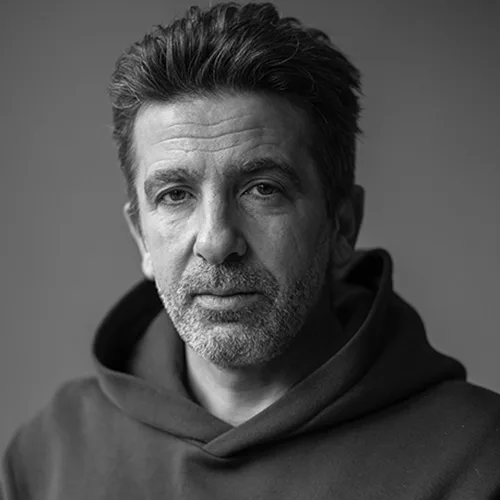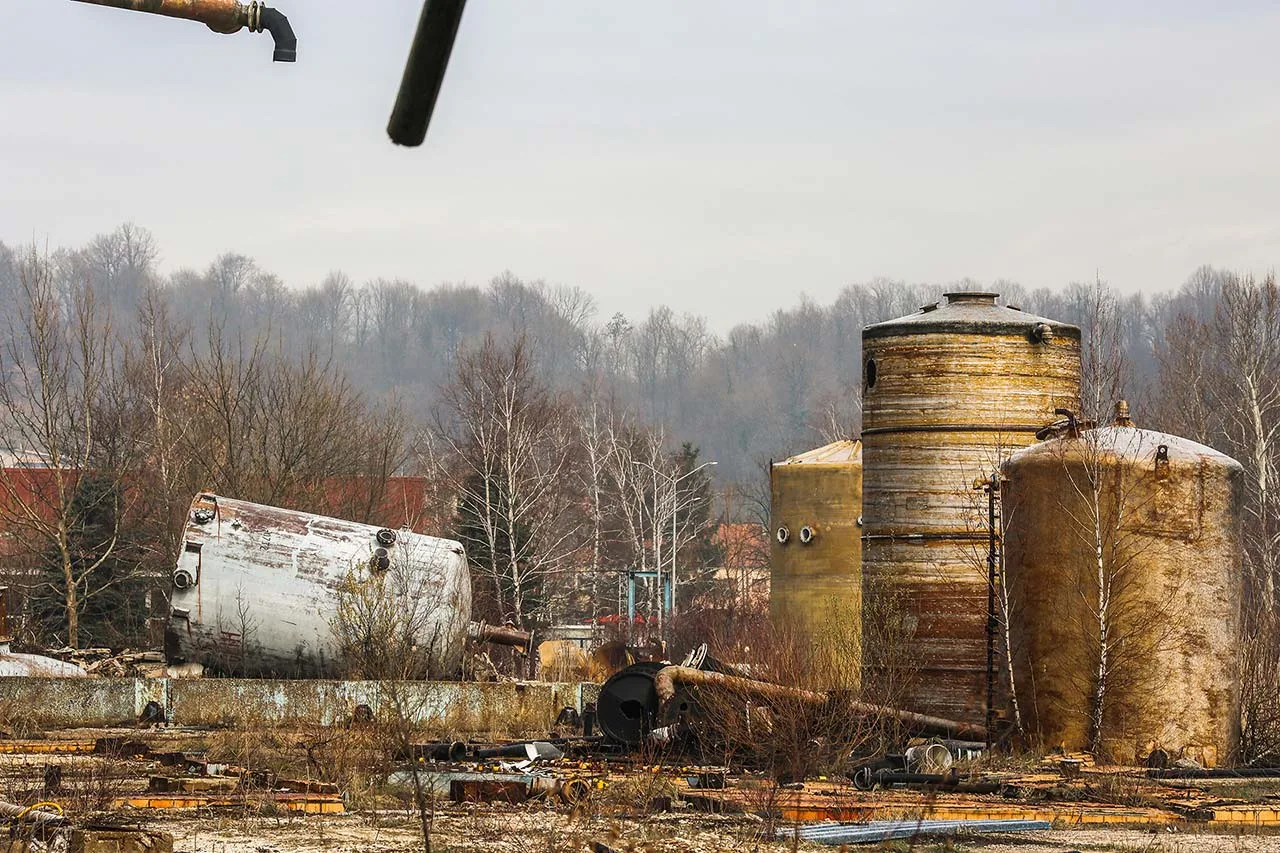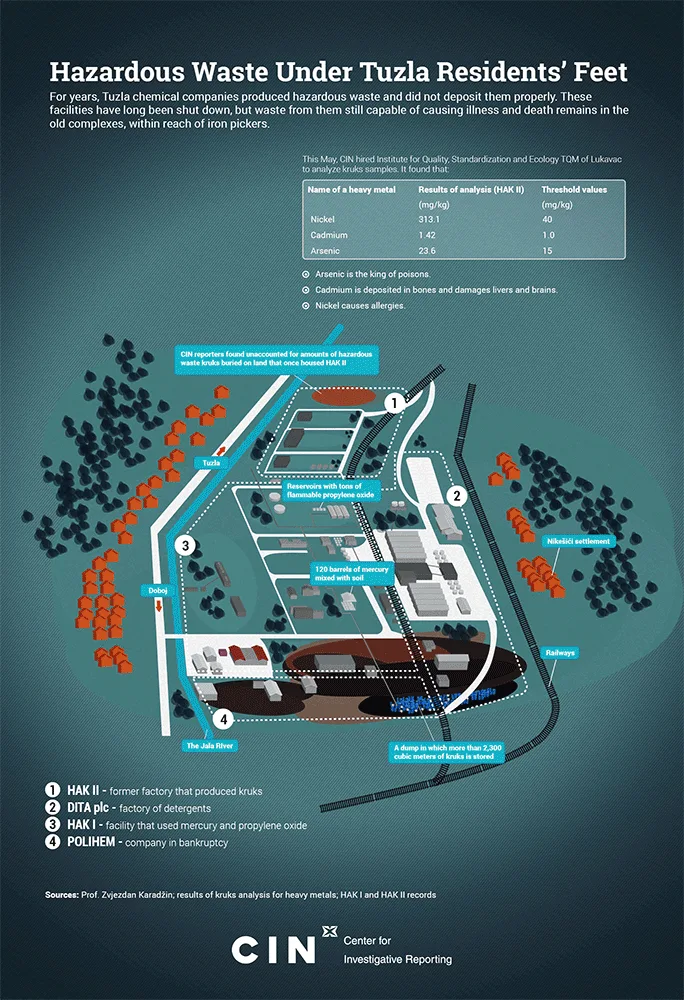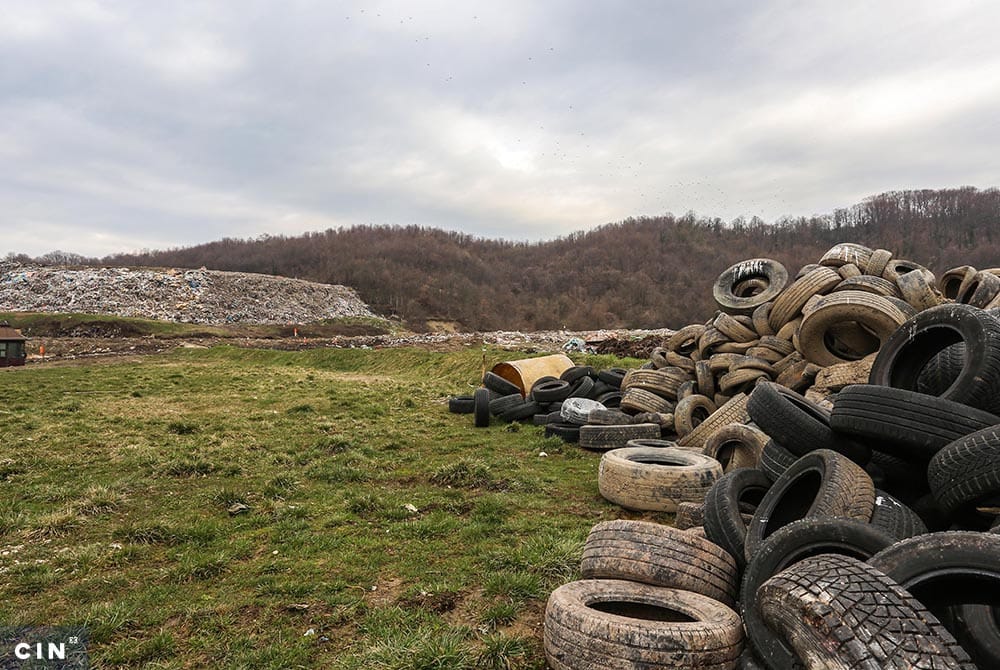The premises of the old chemical plant in Tuzla looks like a set for a post-apocalyptic film. Vegetation has overwhelmed the remains of concrete buildings and roads linking the facilities and warehouses of Chlorine Alkaline Power House (HAK) I and II. The place once produced polyol and toluene diisocyanate (TDI), important to making foam and other types of insulation.
Those parts of the industrial facilities that new owners have not yet cut up and sold are being hauled away by scrap iron pickers. In the process, without any hazardous protection gear, they are running into unsecured hazardous wastes that have been left behind, within their reach.
A building without doors and windows holds 120 barrels of mercury mixed with soil. White birches loom over huge metal containers and knots of pipes filled with tons of highly flammable propylene oxide. Potentially carcinogen toluene diisocyanate waste — kruks — is buried across the compound.
Don't want to miss our stories?
Sign up for our newsletter.
Don't want to miss our stories?
Sign up for our newsletter.
Aldin Bejhanović, 30, said he was digging in search of scrap metal with his father and uncle.
“To feed ourselves and families,” says Bejhanović. “We took off gunmetal valves in pipes in manholes. There was work. But after some time the barrels appeared. It was stinking.”
The reek came from kruks, which resembles tar.
“It stank so strongly that it hurt my eyes. I could not take it,” said Bejhanović. “I stopped for a while, but later I, father and a neighbor arrived to cut out pipes. And we found it there. We did not know that it was a poison. The place was not even marked,” Bejhanović said.
Reporters from the Center for Investigative Reporting in Sarajevo (CIN) had a soil sample analyzed. The results found several heavy metals, dangerous for health, in amounts far above allowable limits.
Four years ago, Bejhanović came down with pulmonary embolism – blood clots blocked an artery to his lungs. Several things can cause this illness, and one of them is poisoning.
“I was feeling out of air when I would bend down to pick something, and I had put up with this for around 14 days. I thought it was cigarettes,” he said. “When it grabbed me and threw me down and when blackness fell over my eyes, I could not reach my car.”
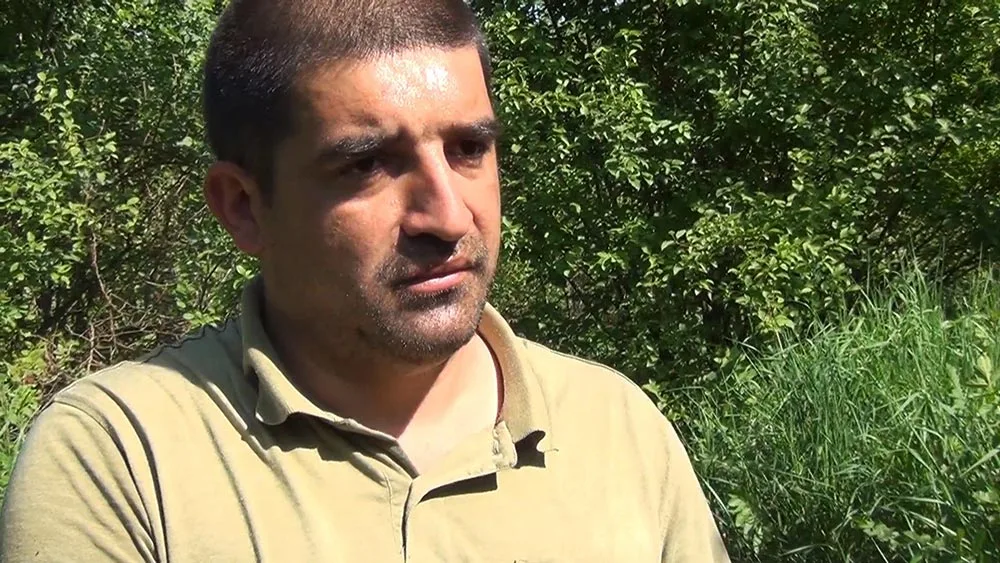
His father passed away from lung cancer in 2016, and his uncle died a year later, after cutting a valve on the factory’s installations. He breathed in gas from pipes and lost consciousness right away. He was taken to the hospital where he died 15 days later.
“His lungs were burned,” said Bejhanović who has not returned to HAK compound since he collapsed.
“Well, they should have cleaned the land of toxins,” says Bejhanović. “As soon as the factory was abandoned, they should have taken that with them – that poison. Thousands can come in and get sick from the same thing.”
The relevant government department, the Federation of BiH (FBIH) Ministry of Environment and Tourism, does not have accurate and complete data about the types and amounts of hazardous waste. It has not identified all those “black spots” – the places polluted with toxic waste. Also, it has never done a plan for managing the waste, that the FBiH government had been waiting for. Thus, the ministry cannot decide on the priorities when it comes to decontaminating dangerous landfills or budgeting the funds needed for this.
Nevertheless, the ministry gave away nearly 850,000 KM for cleaning of some kruks in Tuzla. There was not enough to rehabilitate the whole landfill.
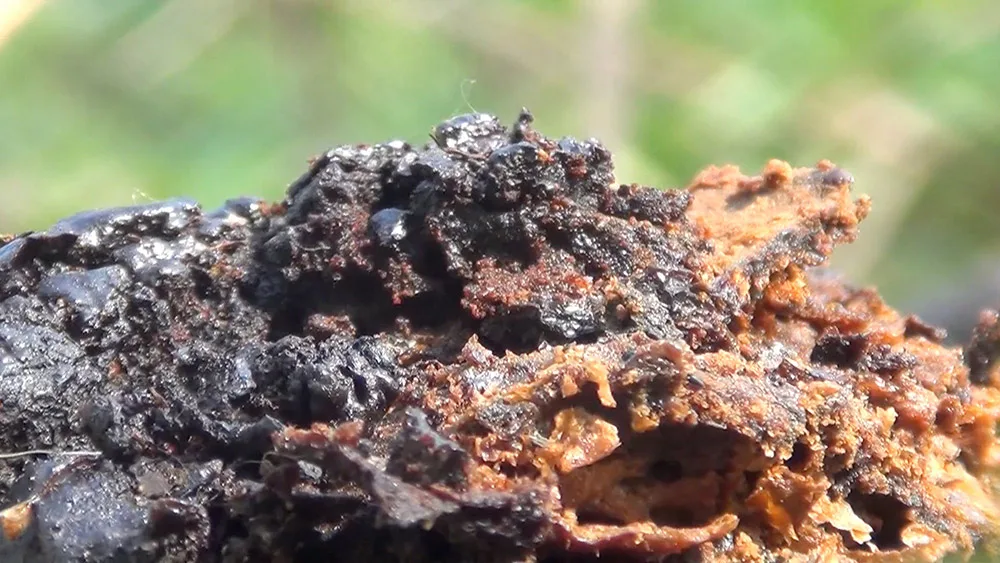
Digging in one’s grave
The Bejhanovićs were digging on the HAK II compound where the level of three heavy metals was high above threshold, according to the Institute for Quality, Standardization and Ecology TQM of Lukavac in its analysis. This May, CIN enlisted the institute to analyze soil samples from the compound.
A professor at the School of Technology in Tuzla, Abdel Đozić, joined CIN on a visit to the compound in order to look for a sample suitable for analysis.
The Institute’s analysis showed that the amount of heavy metal nickel was nearly eight times above the acceptable threshold, while the amounts of cadmium and arsenic topped allowable thresholds by 40 and 60 percent.
“You have to know that arsenic is the king of poisons. It is the most toxic heavy metal that exists,” said Đozić. “Cadmium – it does not have essential functions for the organism. Our organism has no need of it in any biological functions, and it is deposited in bones and damages livers and brains.” Đozić added that the soil was “markedly contaminated with toxic heavy metals.”
Near the compound lie houses and agricultural estates of the neighborhoods of Hudeč, Nikešići and Husino. Wind spreads toxic particles from the landfill over these neighborhoods and farms. With rain, some kruks flows down into underground waters, creeks and rivers that take it to places farther away.
Exposure to these toxic metals can cause life threatening health problems: lung, respiratory and skin cancers, allergies, cardiovascular and kidney diseases.
Tuzla Canton inspector for Environmental Protection Mamery Hajdarević worked in the protection department of the old chemical plant. He said solidified kruks was buried across the factory’s yard, and it was also used as a material for leveling roads and eroded land that belongs to the factory under Husino.
“That means that it’s everywhere. And that’s the story about kruks as well,” said Hajdarević.
In the days when HAK II worked at full capacity, it churned out nearly nine tons of kruks a day – most of which was incinerated for wastewater destruction. However, when the oven was shut down, the dangerous waste was dumped on the factory compound. A smaller amount was incinerated in the Tuzla Coal Power Plant.
At the end of 80s, local authorities asked the management of HAK I and HAK II to build a landfill within the company’s compound. Kruks that could not have been incinerated in the ovens was deposited in the city landfill, but when inspectors banned this, a pit was dug, about 1,000 square meters with drainage channels to collect water.
More than 2,300 cubic meters of kruks were deposited there, according to the existing regulations, enough to nearly fill an Olympic swimming pool to brim.
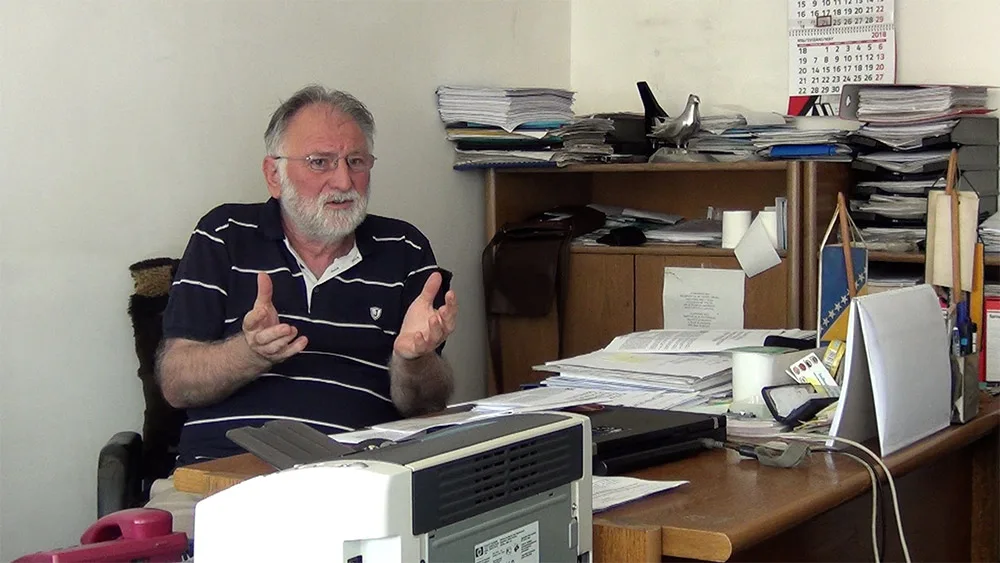
Ministry’s unsuccessful attempts
The FBIH environmental protection strategy for 2008-2018, and the Plan for Waste Management for the period between 2012 and 2017 called for achieving several goals in hazardous waste management: building of dumps and landfills for hazardous waste; establishing a register of types and amounts of hazardous waste; setting up industrial incinerators; introducing fees to encourage firms to produce less waste, and rehabilitation of half of the sites where waste was deposited without regulations. This year will see the end of the implementation of goals — which remain goals only.
FBiH Ministry of Environment and Tourism officials tried to establish the register of FBiH polluters. In 2010, it bought software and 10 computers for cantonal ministries for more than 320,000 KM. The head of the Minister’s Office, Tomislav Lukić, said that the system does not work because ministers have not paid to maintain it over the past seven years.
In the past decade, the ministry gave at least 2.47 million KM for several projects involving hazardous waste decontamination.
Until 2011, the partial rehabilitation of seven “black dots” was partly done – military waste from a Mostar factory Soko; waste oil from the an Energoinvest’s transformer factory in Visoko; obsolete medicines in Hercegovina-Neretva Canton and Canton 10; chemicals from the Vareš Lead and Zink Mine; waste from a leather factory in Livno and kruks in Tuzla. However, accidental and random ways to clean certain sites contaminated with dangerous waste have largely been unsuccessful.

In early 2004, workers from a detergent factory Dita uncovered a kruks dump in the yard. Kruks was buried there at the end of 80s at a plot that is today shared by Dita and the former HAK I.
The relevant cantonal ministries quickly put together a task force to estimate the amount of kruks and suggest how to dispose of it.
The task force said kruks should remain there until a final solution – incineration in the power plant or one of the factories in Tuzla Canton; safe burial at the city landfill Desetine or export out of the country. Nothing has been done and the kruks remains where it was found.
Five years later, the FBIH Ministry of Environment and Tourism, put out a call for applications for the best project to deal with the problem. The ministry chose a Tuzla-based Kemokop’s project to rehabilitate the kruks in the Dita and HAK I yard. The next year the ministry put out a call for applications to select contractors to do the work.
The contract was awarded to Kemokop, a Sarajevo-based Reciklon and a Grude-based Grioss. According to a contract worth 846,000 KM, Grioss was the main partner in charge of communication with the Ministry and oversight of the work that should’ve been carried out by the Tuzla and Sarajevo firms.
A year later, the ministry concluded another contract with Kemokop to clean new finds of kruks from Dita’s compound.
During those two cleanings, less than 600 cubic meters was dug out, which represents one-quarter of the waste disposed of there. The companies were supposed to decontaminate kruks and transport it to a community landfill in Kalesija. However, then manager of that landfill Osmo Muminović and the head of the Department for Kalesija Utility Affairs and Civil Defense, Hazim Halilović, are adamant no waste reached the local landfill.
“The municipality forbade it,” Muminović told CIN reporters.
Environmental inspector Hajdarević said that he witnessed kruks being taken to Kalesija. “Because I organized all of this,” said Hajdarević. “I don’t understand why he said that there isn’t. It is there for sure.”
CIN reporters and Prof. Đozić uncovered solidified kruks at the landfill. They took it for an analysis and found that the concentration of potentially carcinogen cadmium was 60 percent over the threshold.
Lukić said that the ministry agreed on the price and amount of work for rehabilitation of kruks from Tuzla with the contractors based on the budget for the project.
He said that disposal of kruks was set as a priority because the firm that produced it stopped operations without disposing of it or arranging for further monitoring.
However, Lukić could not explain why the waste was only rehabilitated from the area of Dita factory and not from the state land. He said that he could not remember details because the documents have gone missing from the ministry.
“This case which you open is eight years old and it is not here,” said Lukić. “Someone, either intentionally or unintentionally moved it away. And where to? I have no argument.”
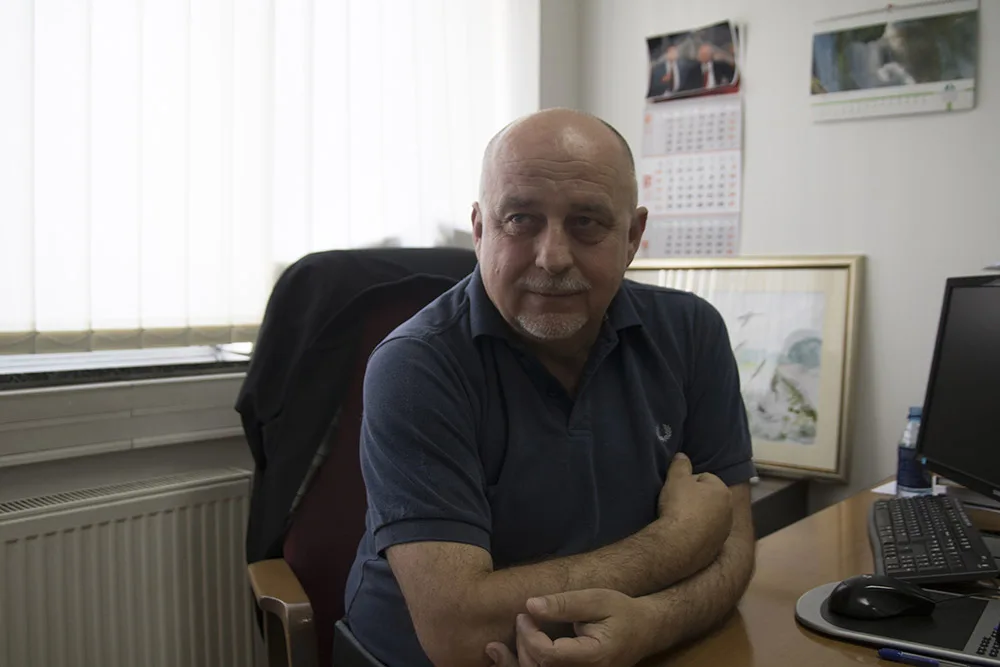
Untreated kruks, mercury and inflammable gas
Before it started to bury it in its compound, HAK II transported its kruks to a former dump at the Paša Bunar neighborhood. It was overhauled in 1998, but residents still dump trash on it. In 2014 and 2016, cantonal and FBiH inspectors described in reports how residents who collected scrap iron had dug out barrels of kruks, releasing a suffocating reek through the neighborhood for days.
The authorities could not establish if anyone managed the landfill or who owned the land. Municipal, Cantonal and FBiH Institutions have been passing the buck for years so no one has worked to solve this problem.
“You cannot make heads or tails of it. Everyone, as soon as the problem appears, everyone’s silent. But what do they say next? The inspection should solve it,” said environmental inspector Hajdarević. “Am I so powerful, and how can I solve it? There’s no way. That possibility does not exist.”
While HAK II produced toluene diisocyanate waste — potentially dangerous kruks — neighboring HAK I used dangerous mercury and inflammable propylene oxide in its operation. More than 47 tons of inflammable propylene oxide and 120 barrels of mercury mixed with soil remain on the compound of the former factory, which a Polish firm Organika’s subsidiary bought in 2006.
Enes Jaganjac was a firefighter in the factory. He explained to reporters that propylene must be regularly checked because it is extremely inflammable if it leaks from pipes. He recalled that propylene caused accidents while the factory was operating.
“A worker was in a synthetic sweater and as he moved his arms or something he caught fire. You cannot see a spark with bare eyes,” said Jaganjac. “We succeeded in saving him.”
Former workers say that this dangerous waste was left unattended. An inspection ordered the Polish investor to start packing soil polluted by mercury into barrels in 2014. But work was never completed because disgruntled workers demanding pay abandoned it. Jaganjac explained that they did this because the investor, along with the cleaning, was cutting out the remains of the factory, something they were not allowed to do.
“We let them in on a few occasions to go in and clean and they were stealing the factory from us,” said Jaganjac.
Organika did not respond to reporters’ calls.
In its June 2016 report on the health of population, the FBiH Public Health Institute stated that lack of proper disposal of hazardous, industrial, and medicinal waste represents one of the most serious threats to the health of population.


